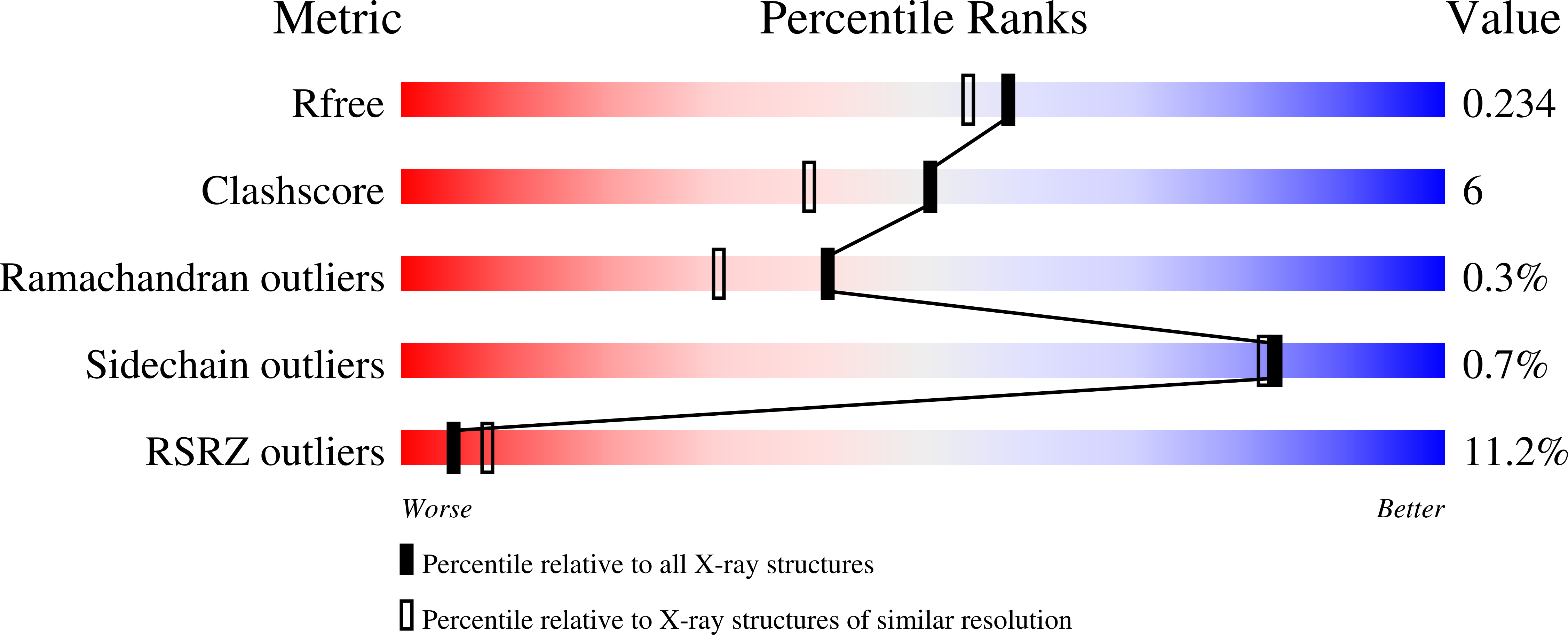Elucidation of the Molecular Recognition of Bacterial Cell Wall by Modular Pneumococcal Phage Endolysin Cpl-1.
Perez-Dorado, I., Campillo, N.E., Monterroso, B., Hesek, D., Lee, M., Paez, J.A., Garcia, P., Martinez-Ripoll, M., Garcia, J.L., Mobashery, S., Menendez, M., Hermoso, J.A.(2007) J Biol Chem 282: 24990
- PubMed: 17581815
- DOI: https://doi.org/10.1074/jbc.M704317200
- Primary Citation of Related Structures:
2IXU, 2IXV, 2J8F, 2J8G - PubMed Abstract:
Pneumococcal bacteriophage-encoded lysins are modular proteins that have been shown to act as enzymatic antimicrobial agents (enzybiotics) in treatment of streptococcal infections. The first x-ray crystal structures of the Cpl-1 lysin, encoded by the pneumococcal phage Cp-1, in complex with three bacterial cell wall peptidoglycan (PG) analogues are reported herein. The Cpl-1 structure is folded in two well defined modules, one responsible for anchoring to the pneumococcal cell wall and the other, a catalytic module, that hydrolyzes the PG. Conformational rearrangement of Tyr-127 is a critical event in molecular recognition of a stretch of five saccharide rings of the polymeric peptidoglycan (cell wall). The PG is bound at a stretch of the surface that is defined as the peptidoglycan-binding sites 1 and 2, the juncture of which catalysis takes place. The peptidoglycan-binding site 1 binds to a stretch of three saccharides of the peptidoglycan in a conformation essentially identical to that of the peptidoglycan in solution. In contrast, binding of two peptidoglycan saccharides at the peptidoglycan-binding site 2 introduces a kink into the solution structure of the peptidoglycan, en route to catalytic turnover. These findings provide the first structural evidence on recognition of the peptidoglycan and shed light on the discrete events of cell wall degradation by Cpl-1.
Organizational Affiliation:
Grupo de Cristalografía Macromolecular y Biología Estructural, Instituto de Química-Física Rocasolano, CSIC, Serrano 119, 28006 Madrid, Spain.


















